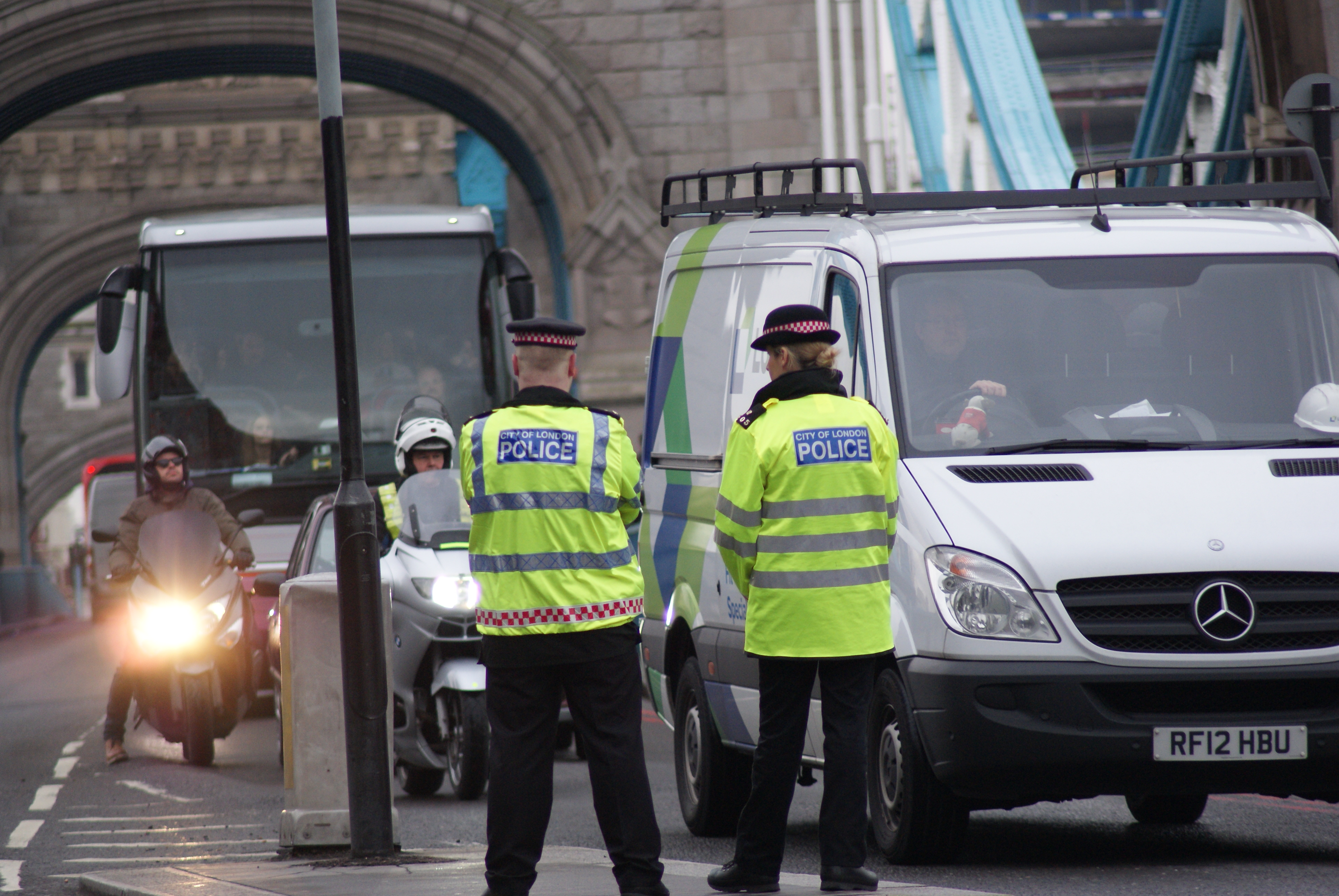Monday, June 19th 2017
In the past week a handful of attacks have put a spotlight on the growing problem of violent extremism across the spectrum of ideologies and brought further attention to the safe-havens created for those ideologies in an increasingly divisive political environment.
The suspect in the attack, a 47-year-old white male, is in police custody facing charges of terrorism and attempted murder after using a white van to ram into a group of pedestrians outside the Muslim Welfare House near Finsbury Park Mosque. One man was killed in the attack and ten others were injured.
The use of a van or truck to carry out a terrorist attack has been employed on a number of occasions over recent months by individuals inspired by the Islamic State. Neil Basu of the London Metropolitan Police said the attack “had all the hallmarks of a terrorist incident.” He spoke to reporters on Monday, stating, “This is an attack against London and all Londoners and we should all stand together against extremists whatever their cause.”
Just hours after the attack in London, French security forces responded to an incident on the Champs-Elysees where a driver attempted to ram a police convoy in a car filled with make-shift explosives. The driver was killed in what French authorities are calling an “attempted attack.” According to reports, the attacker’s car was packed with a Kalashnikov rifle, handguns and gas canisters.
Another incident outside Washington, D.C. also unfolded over the weekend when a 17-year-old Muslim girl was abducted and murdered after leaving evening Ramadan services in Herndon, Virginia. Police say they are not investigating the murder as a hate crime, but believe it was the result of a dispute.
In the past two years, both Europe and the United States have seen an increase in the number of terrorist attacks and plots. Much of that activity has been connected to the rise of the Islamic State group and its successful efforts to inspire and recruit radicals to conduct so-called lone-wolf attacks.
But recent years have also seen a rise in the number of hate crimes and hate incidents, perpetrated by extremists on the right, the left and associated with fringe ideologies.
According to U.K. counter-terrorism authorities, white suspects accounted for 35 percent of all terrorism-related arrests in 2016, up from 25 percent the previous year. At the same time, British authorities are also devoting more resources to threats from trans-national terrorists groups like the Islamic State and al-Qaeda remain.
On Monday, British Prime Minister Theresa May denounced the political climate in Britain, saying there has been “far too much tolerance of extremism in our country over many years – and that means extremism of any kind, including Islamophobia.” May issued a similar statement only two weeks ago following the deadly terrorist attack on London Bridge.
The attack on the mosque, she said, is “a reminder that terrorism, extremism and hatred take many forms and our determination to tackle them must be the same, whoever is responsible.”
In the past two years, both Europe and the United States have seen an increase in the number of terrorist attacks and plots. Much of that activity has been connected to the rise of the Islamic State group and its successful efforts to inspire and recruit radicals to conduct so-called lone-wolf attacks.
But recent years have also seen a rise in the number of hate crimes and hate incidents, perpetrated by extremists on the right, the left and associated with fringe ideologies.
According to U.K. counter-terrorism authorities, white suspects accounted for 35 percent of all terrorism-related arrests in 2016, up from 25 percent the previous year. At the same time, British authorities are also devoting more resources to threats from trans-national terrorists groups like the Islamic State and al-Qaeda remain.
On Monday, British Prime Minister Theresa May denounced the political climate in Britain, saying there has been “far too much tolerance of extremism in our country over many years – and that means extremism of any kind, including Islamophobia.” May issued a similar statement only two weeks ago following the deadly terrorist attack on London Bridge.
The attack on the mosque, she said, is “a reminder that terrorism, extremism and hatred take many forms and our determination to tackle them must be the same, whoever is responsible.”
Targeting social media and online communities is a part of the strategy to address the problem of extremism and deny hateful ideologies “a safe space to grow,” May said in her speech.
Last week, Prime Minister May and the newly elected French President Emmanuel Macron announced a joint campaign to counter online radicalization. The effort focuses on imposing greater legal liability on technology and social media companies that fail to remove certain types of inflammatory content. Germany is pursuing a similar strategy.
In the sphere of public debate, anti-immigrant and xenophobic sentiment and statements from political leaders energized voters in last year’s British campaign to leave the European Union and contributed to the dramatic rise in hate incidents. A spokesperson for London’s Metropolitan Police force acknowledged as much earlier this year, saying that Brexit could act as a “trigger” for further hate crimes and violence.
A United Nations report highlighted concerns over the environment around Brexit, stating that the campaign “was marked by divisive, anti-immigrant and xenophobic rhetoric.” It continued that by contributing to that rhetoric or failing to denounce it, politicians and prominent political figures “created and entrenched prejudices, thereby emboldening individuals to carry out acts of intimidation and hate.”
On June 2016, only days before the Brexit referendum, the hatred spilled over when Minister of Parliament Jo Cox was fatally shot and stabbed by a right-wing, neo-Nazi extremist who targeted the Labour Party parliamentarian for her support for immigration and the European Union.
On Monday, Cox’s husband, the attack in London, Brendan Cox issued a call to denounce all forms of terrorism, regardless of ideological affiliation. “When Islamist terrorists attack we rightly seek out hate preachers who spur them on. We must do the same to those who peddle Islamophobia,” he wrote on Twitter.
Nick Lowles, chief executive of HOPE not Hate, a U.K.-based advocacy group that counters racism and fascism, warned that there is a “dangerous sense of inevitability” about the Monday morning attack on Muslim worshipers.
“My fear is that we are entering – and the extremists want us to enter – a cycle of of tit-for-tat violence. Where the extremes feed off one another, and terror attack propels terror attack,” he said. In an appeal to calm all sides, he emphasized that “no ‘people,’ are to blame for the actions of a few. Muslims are not ‘taking over,’ nor are Islamophobic extremists.”
In the United States, the threat of radicalized political extremists was underscored last week with the attempted mass-shooting of a group of Republican lawmakers practicing baseball in Alexandria, Virginia. The shooter was identified as a “hardcore Democrat” and supporter of Bernie Sanders, who took out his hatred of Republicans with a semi-automatic weapon.
Many U.S. politicians responded to the incident saying that it demonstrated the need for the left and the right to dial down their rhetoric and stop demonizing or dehumanizing the other side of the debate.
In recent year’s, official FBI statistics have shown an increase in the number of hate crime incidents. The most recent figures show a 6.8 percent increase between 2014 and 2015, largely driven by anti-Muslim incidents.
More up to date figures gathered by the Southern Poverty Law Center (SPLC) and Anti-Defamation League (ADL) show that trend accelerating during and after the 2016 presidential election, largely connected to the heated rhetoric used by President Trump used to describe his immigration and anti-terror agenda.
While hate crimes and hate incidents are different from acts of terrorism, there is a growing environment both in civil discourse and in online communities that have lowered the threshold for individuals to take action on their specific ideology.
“When tensions are so high and the discussion around our political environment is so charged, so angry, and so hateful, there are repercussions,” Oren Segal, director of ADL’s Center on Extremism said.
“Whether it’s right-wing extremism, Islamic extremism or left-wing extremism or any type, you need leaders to lead, to be conscious of what they say and to not exacerbate the problem,” he advised.
The ADL has documented a shocking rise in the number of right-wing and white nationalist propaganda leaflets and fliers disseminated on 108 college campuses across the United States, which Segal sees as one measure of that the hate groups have “self-emboldened” in the current political climate.
“The fact that there is such a volume in that specific activity i think attests to the fact that white supremacists feel more comfortable in this political environment,” Segal explained, adding that “when white supremacists feel comfortable that’s never good.”
The ADL has also been tracking the rising anger among the American left that has been directed against Trump and his political allies. In the months before last week’s attempted mass-shooting of GOP congressmen, the group warned U.S. law enforcement personnel about the possibility of left-wing violence arising from that anger.
There is plenty of responsibility to go around for the current climate that seems to breed extremism, Segal noted. Political leaders and citizens have a responsibility to be civil and tone down divisive rhetoric both in face to face communications and online. Technology companies also bear some responsibility to create “safer spaces” on their platforms and prevent those platforms from being exploited.
“Fundamentally words have an impact,” Segal stated. “That’s why we call on leaders, whether its in the community or whether its in the highest office, to distance themselves and reject the kind of hateful rhetoric we are seeing. Otherwise it will continue to run amok.”






